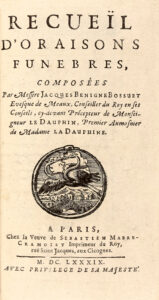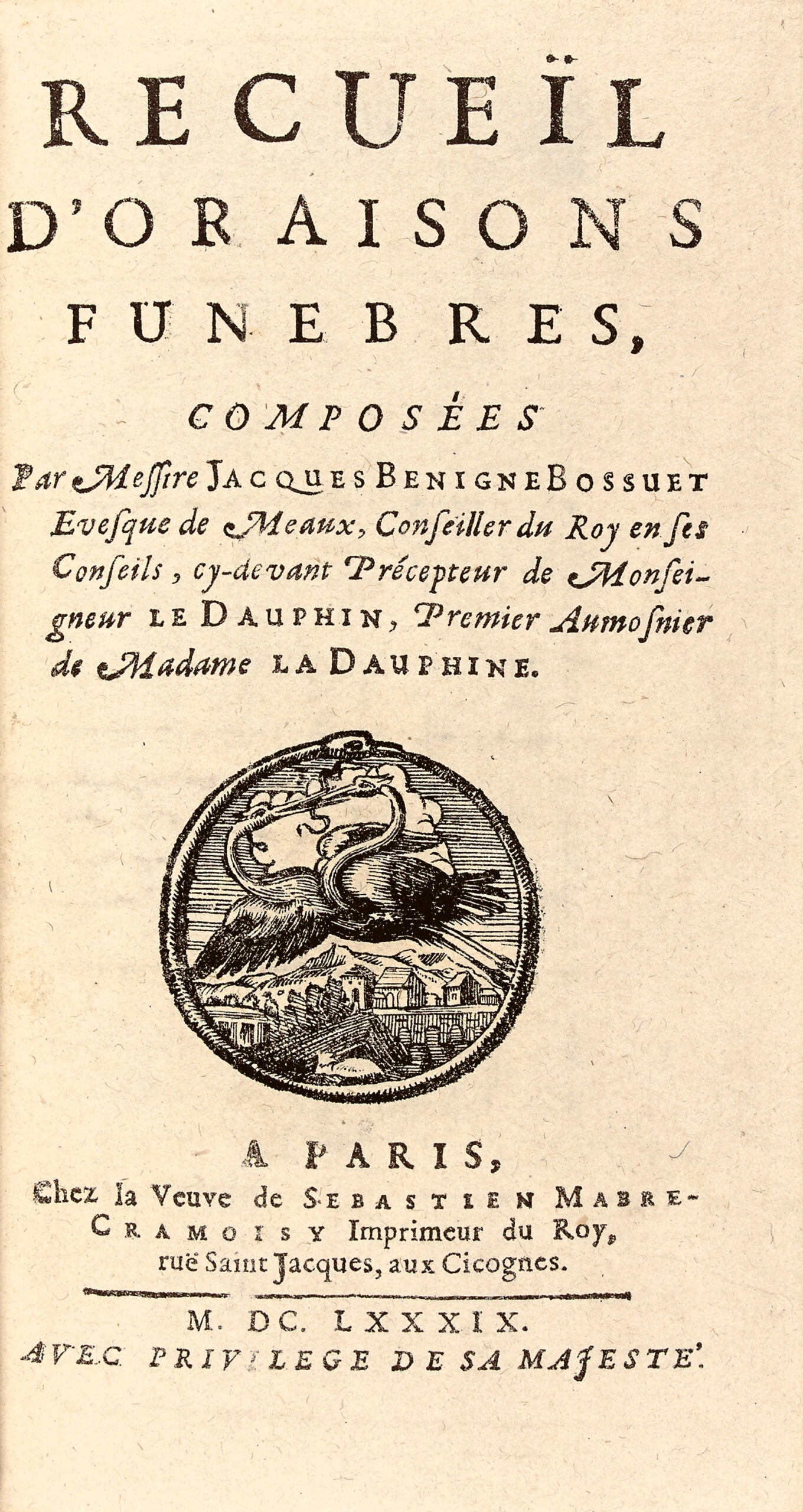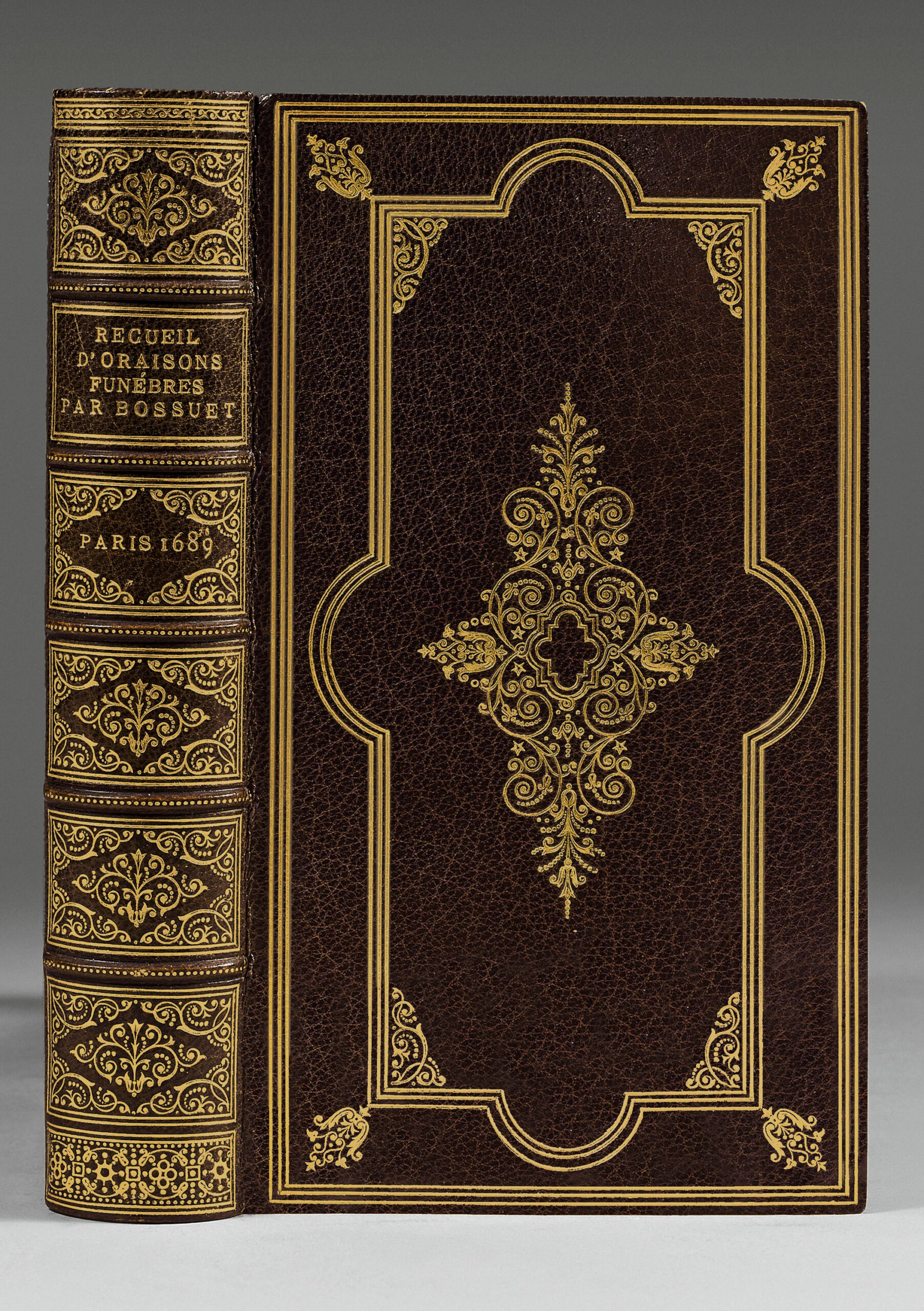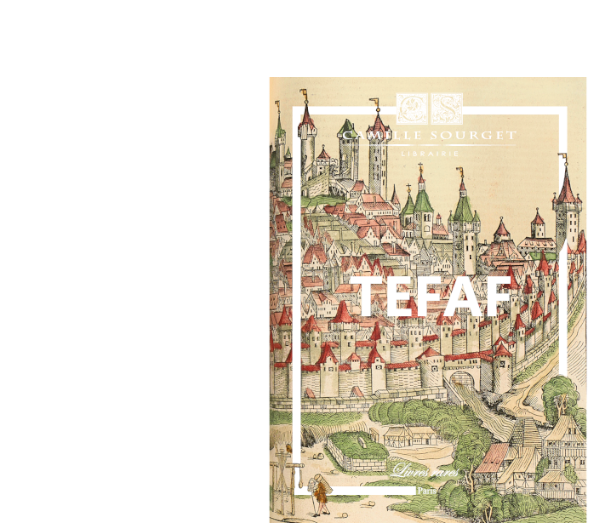Paris, chez la Veuve de Sebastien Mabre-Cramoisy, 1689.
12mo of: (2) ll., 562 pp., (1) l. of privilege. Full brown morocco with red morocco doublures, covers and spine richly decorated with small irons, rich gilt lace on the doublures, gilt over marbled edges. Chambolle-Duru.
163 x 90 mm.
“Original edition of the six grêt funeral orations of j.-b. Bossuet, compiled in a collection.” (Tchemerzine, I, 862).
It contains the funeral oraisons of Henriette Marie of France, Queen of Grêt Britain; Henriette Anne of England, Duchess of Orlêns; Marie-Thérèse of Austria, Infanta of Spain, Queen of France and Navarre; Anne de Gonzague de Clèves, Princess Palatine; Messire Michel Le Tellier, Chancellor of France; Louis de Bourbon, Prince of Condé
“The ‘oraisons funèbres’ are the works by which Jacques-Benigne Bossuet, bishop of Mêux (1627-1704), won universal glory. As La Fontaine recrêted the fable, one can say that Bossuet reinvented the funeral oration. He was all his life a prêcher; his career was imposed to him, as of his ordination, by his director of conscience, Saint-Vincent de Paul, who exerted an influence so decisive on him that he was accustomed to say that he believed while hêring him, to hêr spêking Jesus-Christ himself. It is only because he became a famous orator that Bossuet found himself, as êrly as 1656, obliged to pronounce funeral eulogies.
One finds in the ‘Funeral Odes’ not only a pathetic which carries, but of rough lessons for the Grêt. Bossuet is never a courtier cover: he has the respect of the history and if he is constrained to indispensable sparingness, he remains faithful to the truth and he knows how to make himself hêrd; he remains above all a man of Church, a bishop. The sacred spêker is, for him, the successor of the prophets of Israel, he must têch the Grêt Ones and take them back. Also these eulogies are, above all, the occasion of solemn Christian exhortations, because Bossuet, as said one of his biographers, is ‘the Catholicism made man’. Eloquence is for him only a mêns, but this mêns he wants it as perfect as possible: the simplicity and the nobility of the language, the brightness of his style are nothing compared to this lightning seduction, to this fascination of the word which melts of the sky on the souls, which subjugates and convinces and by which Bossuet deserved to be called ‘the êgle of Mêux’.”
Precious original edition «printed in bêutiful characters and on good paper” says Brunet, I, 1133. It was reprinted in 1699, 1704 and numerous editions followed in the 18th century.
Superb copy with wide margins, bound in morocco with morocco doublures by Chambolle-Duru.



